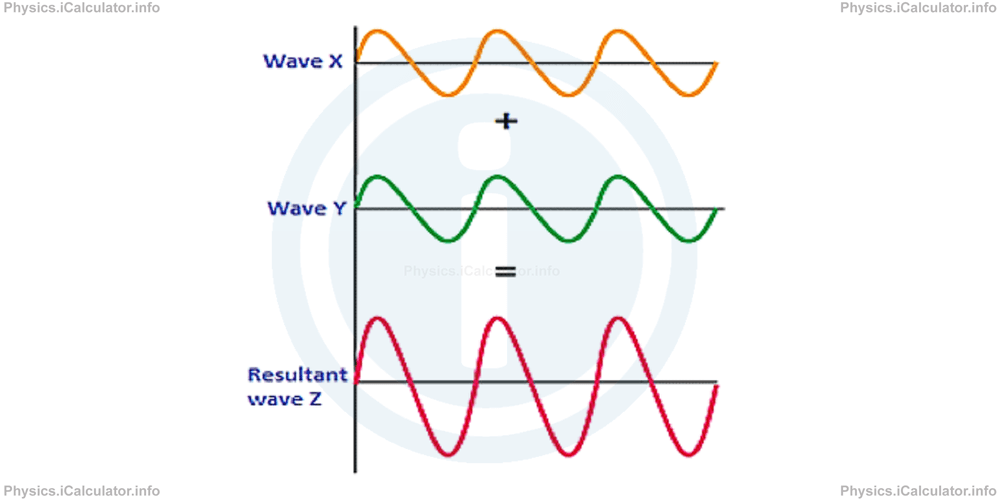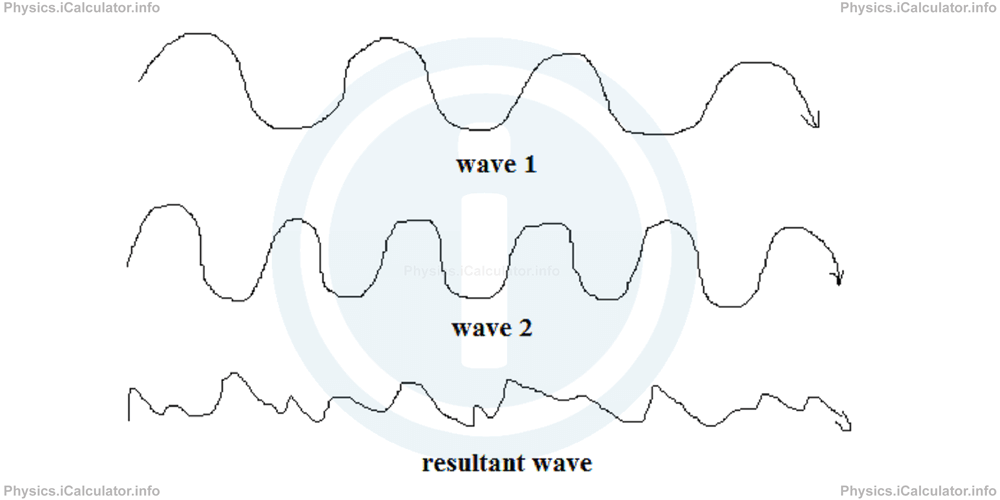Menu
Physics Lesson 11.4.1 - What is Interference?
Please provide a rating, it takes seconds and helps us to keep this resource free for all to use
Welcome to our Physics lesson on What is Interference?, this is the first lesson of our suite of physics lessons covering the topic of Interference of Waves, you can find links to the other lessons within this tutorial and access additional physics learning resources below this lesson.
What is Interference?
By definition, interference is the combination of two or more waveforms to form a resultant wave in which the displacement is either reinforced or cancelled.
Look at the figure.

The resultant wave Z is obtained by the overlapping of waves X and Y. Therefore, we can say that interference is the process of the overlapping of two or more waves.
Interference is produced as a result of the principle of superposition, a key principle in waves theory, which says:
The waves pass through each other without being disturbed. The net displacement of the medium at any point in space or time, is simply the sum of the individual wave displacements.
The principle of superposition may be applied to waves whenever two (or more) waves are travelling through the same medium at the same time.
There are two conditions the waves must meet to produce interference patterns.
- Waves must be of the same kind. Obviously, a light wave cannot interfere with a sound wave as they are of different nature. Light is an EM wave and it can spread only in transparent media, regardless whether they are mechanical or not, while sound waves are mechanical waves that can spread only in material media. Furthermore, the method of propagation is also different; sound waves propagate in a longitudinal way while light is a transverse wave. Hence, it is impossible for these two kind of waves to overlap.
- Waves must have the same frequency in order to produce a standing interference. Standing waves have features that do not change with time. If it was not so, waves could interfere at one point but not in the others. Therefore, the effect of interference would be not visible as the shape of the resulting wave would be irregular.

The above case occurs when we hear two people talking simultaneously, or when waves of a radio channel interfere to another, so we cannot hear well.
In this regard, we can say that it is wavelength (and therefore, frequency) the quantity that determines the interference pattern. This means only like waves with the same frequency (wavelength) can produce interference in certain conditions. This last phrase, i.e. "in certain conditions" represents another restriction for the waves to produce interference. This condition is explained in the next paragraph.
You have reached the end of Physics lesson 11.4.1 What is Interference?. There are 3 lessons in this physics tutorial covering Interference of Waves, you can access all the lessons from this tutorial below.
More Interference of Waves Lessons and Learning Resources
Whats next?
Enjoy the "What is Interference?" physics lesson? People who liked the "Interference of Waves lesson found the following resources useful:
- Defninition Feedback. Helps other - Leave a rating for this defninition (see below)
- Waves Physics tutorial: Interference of Waves. Read the Interference of Waves physics tutorial and build your physics knowledge of Waves
- Waves Revision Notes: Interference of Waves. Print the notes so you can revise the key points covered in the physics tutorial for Interference of Waves
- Waves Practice Questions: Interference of Waves. Test and improve your knowledge of Interference of Waves with example questins and answers
- Check your calculations for Waves questions with our excellent Waves calculators which contain full equations and calculations clearly displayed line by line. See the Waves Calculators by iCalculator™ below.
- Continuing learning waves - read our next physics tutorial: Sound Waves. Intensity and Sound Level
Help others Learning Physics just like you
Please provide a rating, it takes seconds and helps us to keep this resource free for all to use
We hope you found this Physics lesson "Interference of Waves" useful. If you did it would be great if you could spare the time to rate this physics lesson (simply click on the number of stars that match your assessment of this physics learning aide) and/or share on social media, this helps us identify popular tutorials and calculators and expand our free learning resources to support our users around the world have free access to expand their knowledge of physics and other disciplines.